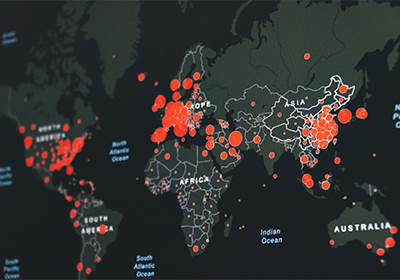
Harnessing the Power of Azure Databricks
Azure Databricks + Microsoft Fabric + OneLake = Advanced Data Solution
In the rapidly evolving landscape of data analytics and management, Microsoft offers a robust set of tools that empower organizations to harness their data effectively. Among these, Azure Databricks stands out for its scalable analytics, Microsoft Fabric for its enterprise-grade data integration, and OneLake for its storage capabilities. Together, these tools provide a comprehensive solution for managing, processing, and analyzing vast amounts of data in real-time. This blog post explores how to leverage Azure Databricks along with Microsoft Fabric and OneLake to create a powerful data analytics platform.
Introduction to Azure Databricks, Microsoft Fabric, and OneLake
Azure Databricks is a cloud-based analytics platform optimized for the Microsoft Azure cloud infrastructure. It offers a collaborative environment for data scientists, engineers, and business analysts to work together seamlessly. Based on Apache Spark, it provides high-performance analytics with a suite of machine learning, graph processing, and streaming capabilities.
Microsoft Fabric (previously known as Azure Data Factory) is an integration service that allows you to create, schedule, and orchestrate your data workflows. It connects disparate data sources across various formats and processing methods, facilitating a smooth data flow within your systems.
OneLake, a relatively newer addition to Microsoft’s data management suite, is a unified data lake storage service that simplifies data storage across multiple platforms and formats. It ensures that data remains secure and compliant while being easily accessible for analysis and insights.

Introduction to Azure Databricks, Microsoft Fabric, and OneLake
Understanding the Integration of Azure Databricks, Microsoft Fabric, and OneLake
At the heart of this integrated ecosystem is OneLake, a unified data lake solution designed to store vast amounts of data from various sources in a single, accessible location. This centralized approach not only simplifies data management but also bolsters security and compliance across the board. The data stored in OneLake can range from structured transactional data to unstructured social media feeds, all of which are kept secure and ready for analysis.
To populate OneLake with data, Microsoft Fabric plays a crucial role. It acts as the orchestrator of data flow, automating the ingestion of data from disparate sources into OneLake. This integration tool is adept at handling both batch and real-time data, ensuring that the data lake is always stocked with the most current data available. By connecting various data sources, Microsoft Fabric allows organizations to craft comprehensive data pipelines that are both efficient and scalable.
Once the data is centralized in OneLake, Azure Databricks steps in to perform heavy-lifting data analytics. Built on Apache Spark, Azure Databricks offers a collaborative platform where data scientists and analysts can work together to explore, model, and analyze data. The platform supports a wide range of analytics activities from simple data aggregation to complex machine learning algorithms. The seamless integration with OneLake allows users to directly access and analyze large datasets, turning them into insightful reports, dashboards, and predictive models.
The beauty of using Azure Databricks in conjunction with Microsoft Fabric and OneLake is the creation of a scalable and collaborative environment. Data teams can efficiently collaborate on the same datasets and analytics processes, ensuring consistency and accuracy in insights. Additionally, the scalable nature of these tools means that as data volume grows, the infrastructure can grow with it without sacrificing performance.
Integrating Azure Databricks with Microsoft Fabric and OneLake offers businesses several strategic advantages:
- Enhanced Operational Efficiency: Automating data flows and centralizing data storage significantly cuts down on the time it takes to prepare data for analysis, thus speeding up the decision-making process.
- Cost Effectiveness: By optimizing data storage and processing, organizations can achieve greater cost efficiency, reducing the need for extensive physical infrastructure.
- Improved Data Security: The integration provides robust security features, including comprehensive access controls and encryption, to ensure that data is protected across all stages of its lifecycle.
The synergy between Azure Databricks, Microsoft Fabric, and OneLake provides a comprehensive solution that empowers organizations to manage their data more effectively. This powerful combination not only streamlines the data management process but also enhances data analytics capabilities, enabling businesses to derive actionable insights swiftly and securely. For companies looking to thrive in a data-centric world, leveraging these integrated Microsoft tools is a step towards achieving more informed, data-driven decision-making.
If you or your Team is struggling with managing your organizational data, contact the Databricks certified engineers at Oakwood today.



